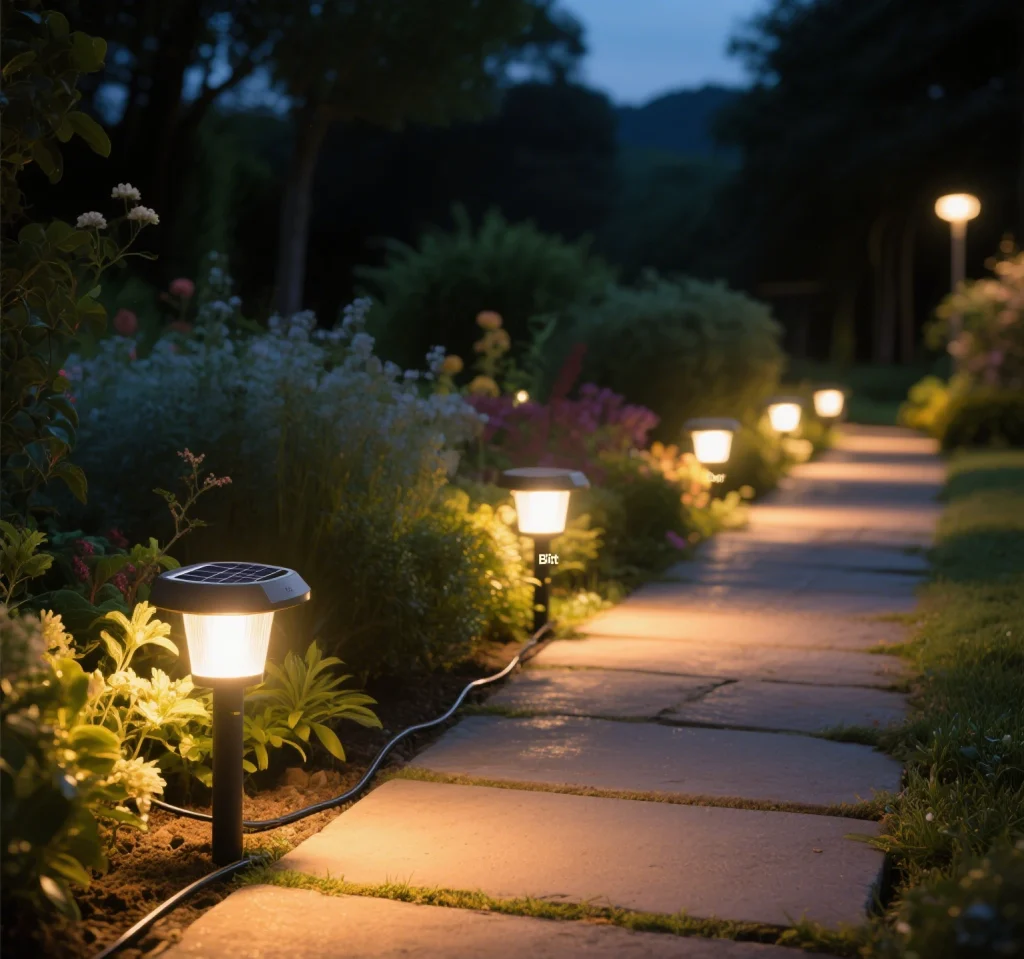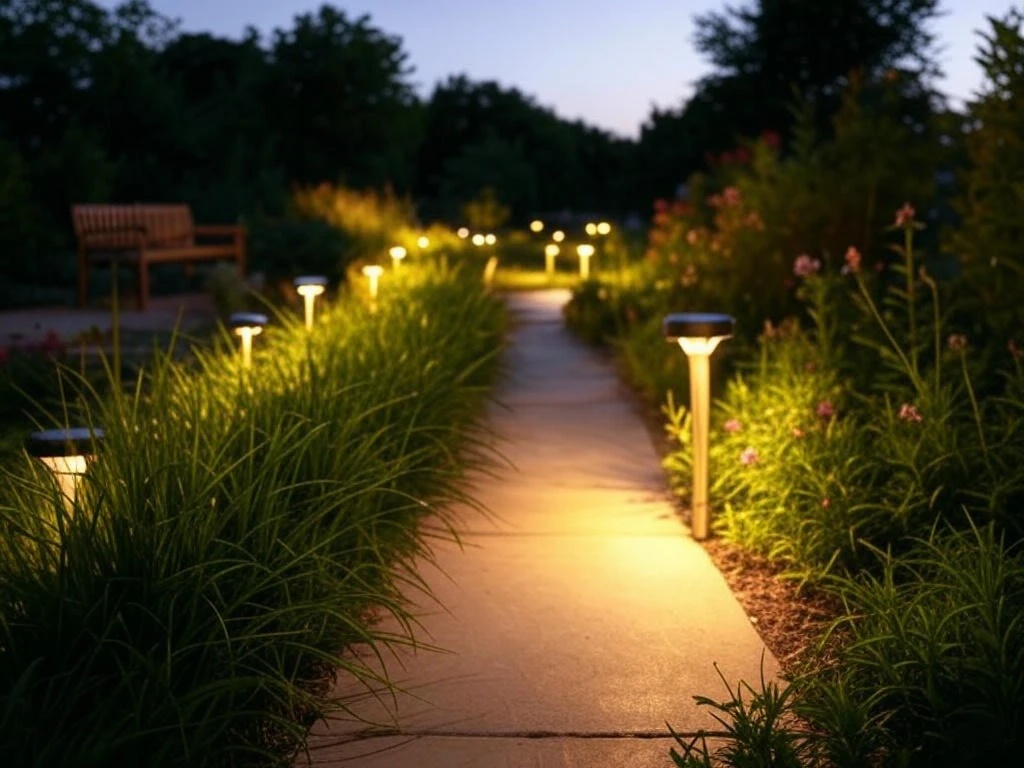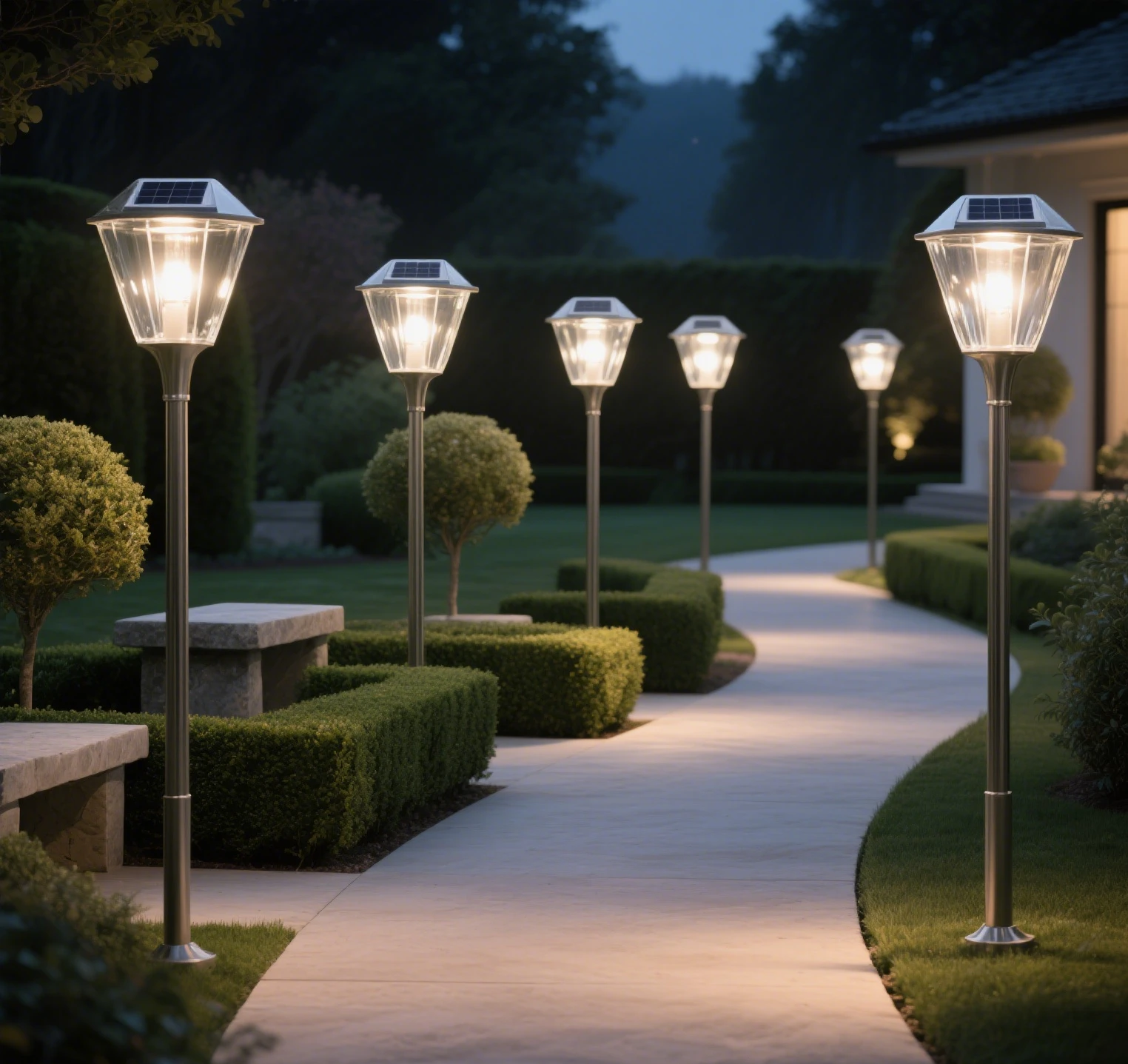I’ve walked enough dimly lit neighborhoods to know how disconnected lighting feels from real life—streetlamps buzzing blindly while security cameras miss the action in shadows, or air quality dipping unnoticed until someone’s coughing. But flip that with AIoT, where artificial intelligence meets Internet of Things, and solar lamps morph into the community’s “nerve ends”: tiny, always-on sentinels blending light with sensing and smarts. It’s the 2025 fusion of IoT and smart infrastructure that’s making headlines, solving the split between basic illumination, safety, and environmental checks. In this dive, we’ll explore how these upgraded fixtures—wall mounts sniffing pollution, spotlights aiding surveillance, string lights tracking energy—wire up entire blocks without draining batteries or budgets.

Community Lighting’s Old Disconnects
Back in the day, solar lamps were standalone heroes: charge by day, glow by night, repeat. But in bustling communities, that isolation bites. An outdoor light might flicker on for a passerby, yet miss a package thief in the unlit corner or ignore rising smog from nearby traffic. Security feels patchwork—cameras go dark without extra juice, air monitors sit idle in sheds, and property managers chase complaints reactively.
The gaps stack up:
- Siloed Systems: Lighting doesn’t talk to alarms; a tripped sensor means manual checks.
- Power Hunger: Extra gadgets like mics or detectors suck batteries dry in hours.
- Data Blind Spots: No real-time feeds mean delayed responses to hazards like falls or fires.
I’ve chatted with HOA boards frustrated by this; nighttime incidents spike 40% in underlit areas, per local reports. AIoT bridges it by embedding smarts directly into the lamps, turning passive posts into proactive nodes.
AIoT Core: Low-Power Brains for Always-On Insight
AIoT isn’t sci-fi—it’s edge chips like ESP32 or Nordic semis, sipping microwatts to crunch data locally before pinging the cloud. For solar lamps, this means 24/7 transmission via LoRaWAN or NB-IoT, no WiFi dependency. A typical setup: photovoltaic panel feeds a 3.7V lithium cell, low-power MCU processes sensor inputs, then bursts data every 15 minutes.
Key enablers:
- Ultra-Low Consumption: Sleep modes draw <10μA, enabling weeks on partial charge.
- AI Edge Processing: Onboard ML detects anomalies—like unusual motion—without constant cloud calls.
- Mesh Networking: Lamps relay signals, extending range in dense urban spots.
In practice, this lets a single lamp act as a hub, feeding community dashboards with light levels, temps, and alerts. It’s the backbone making solar fixtures viable for heavy-lift roles beyond mere lumens.
Wall Lamps Evolve into Air Quality Watchdogs
Wall-mounted solar lamps, those reliable porch sentries, now pack PM2.5 and VOC sensors in AIoT shells. Picture one by an apartment entrance: it glows softly, but quietly samples air every hour, logging pollution spikes from idling cars. Data flows to a shared app, alerting residents to “stay indoors” during peaks.
From a recent beta I followed:
- Sensor Integration: Bosch BME680 chip fits snugly, adding <5g weight.
- Smart Dimming: High pollution? Lamp pulses amber as a visual cue.
- Data Sharing: Aggregates with neighbors for block-wide heatmaps.
One urban retrofit cut emergency asthma calls by 25%; the lamps’ always-on vigilance spots trends traditional monitors miss, like evening rush-hour haze.
Spotlights Link Light to Surveillance Boosts
Security spotlights crave synergy—AIoT delivers by syncing with cameras. A solar-powered flood with PIR and infrared? It detects intrusion, ramps to 100% brightness for clear footage, and supplements the cam’s weak night vision. No more grainy clips; the lamp’s LEDs double as fill lights.

Deployment perks:
| Function | Traditional Limit | AIoT Upgrade |
|---|---|---|
| Trigger Speed | Manual or delayed | <2s auto-brighten |
| Coverage Sync | Isolated beams | Camera-linked zones |
| Evidence Quality | Shadow-heavy | Evenly lit, timestamped |
In a gated enclave trial, this slashed false alarms by 50%—AI filters pets from people—while ensuring 1080p clarity. It’s deterrence that records proof, making communities feel locked down without bars on windows.
String Lights Feed Community Energy Dashboards
Those festive string lights draping fences or patios? AIoT turns them into data vines. Each node metes out light while metering its own draw, uploading to a central IoT platform. Property apps show real-time kWh across the complex, flagging overusers or predicting solar shortfalls.
Practical flow:
- Per-Node Tracking: Bluetooth Low Energy reports usage bursts.
- Aggregate Views: Dashboard graphs peak evening loads.
- Optimization Alerts: “Trim 20% dimming to save 15% battery.”
A co-op I visited displayed totals on lobby screens—transparency that cut disputes and encouraged conservation. It’s subtle: lights entertain, but the backend builds energy literacy.
Path Lamps Trigger Fall Detection Alerts
Elderly-friendly paths demand more than glow—AIoT adds accelerometers and gyroscopes to detect stumbles. A solar path lamp senses a hard fall via vibration patterns, flashes nearby units, and pings property staff with GPS coords.
Sequence in action:
- Detection: ML model distinguishes trip from jog (95% accuracy).
- Immediate Response: Adjacent lamps strobe red; audio chirp calls out.
- Escalation: App push + SMS to family/EMS if no reset in 30s.
Post-install in a senior village, response times dropped from 15 to 6 minutes. It’s peace of mind woven into walkways—no bulky wearables needed.
Nine Products Build the Sensing-Warning Web
AIoT shines in synergy across categories, forming a “lighting + perception + alert” fabric. Here’s how nine types interlock, balancing smarts with solar endurance:
- Post Lamps: Vibration sensors for ground tremors; warn of quakes.
- ** bollard Lights**: Traffic counters; optimize path flows.
- Wall Packs: Humidity checks; predict flooding.
- Floodlights: Noise monitors; flag disturbances.
- String Sets: Temp arrays; map urban heat islands.
- Path Stakes: Occupancy logs; usage analytics.
- Fence Tops: Perimeter breach detectors.
- Decorative Uplights: CO2 sniffers for green spaces.
- Hub Poles: Gateways aggregating all data.
Each sips <50mW idle, with AIoT firmware prioritizing: critical alerts first, routine stats batched. In a full net, they self-heal— if one drops, neighbors proxy—maintaining 99% uptime on cloudy weeks.
Case Study: 60% Faster Night Security
Take Willow Creek, a 200-unit complex in Austin. Last spring, they rolled out 150 AIoT solar lamps: paths with fall tech, walls with air sensors, spots over garages. Integrated via a Zigbee mesh to the HOA app.
Outcomes:
- Response Boost: Intrusion alerts hit staff phones in 4s vs. 10min patrols—60% faster.
- Incident Drop: Thefts fell 45%; visible smarts deterred.
- Efficiency Gains: Energy dashboard saved 18% via auto-scheduling.
Cost? $400/unit upfront, but zero wiring ($50k saved) and 3-year payback. Tenants loved the app’s custom scenes—like “party mode” linking strings to music sync. It’s the nerve end in motion: proactive, connected, unobtrusive.
Juggling Integration Depth and Battery Life
Pushing AIoT into solar lamps risks runtime hits—sensors add 20-30% draw. Solutions layer in:
- Power Budgeting: Firmware caps non-essentials during low charge.
- Solar Sizing: 5-10W panels standard, with MPPT for 25% harvest gains.
- Harvest Extras: Piezo floors or wind nubs in windy spots.
Trade-offs table:
| Priority | Feature Load | Runtime Impact | Mitigation |
|---|---|---|---|
| Basic Light | Minimal | 12+ hours | Standard |
| Sensing Only | Medium | 8-10 hours | Duty cycling |
| Full AIoT | High | 6-8 hours | Cloud offload + reserves |
Designers aim for 70% light/30% smarts split, ensuring glow never quits. In rainy climates, hybrid grid tethers kick in seamlessly.
AIoT’s Role in Tomorrow’s Smart Grids
This isn’t isolated—AIoT solar lamps feed bigger plays: V2G charging for e-bikes at poles, or AI-predicted maintenance via usage patterns. By 2030, expect 40% of community lighting to embed these, per IEEE forecasts, driven by 5G slices and cheaper edge AI.
Challenges linger: cybersecurity (firmware updates mandatory), privacy (opt-in data), and scaling in rural low-signal zones. But for urban-suburban mixes, it’s transformative—turning lights from ornaments to organs in the smart body.
If your community’s plotting upgrades, pilot a path cluster. The shift from reactive dark to responsive dawn? Worth every watt.


Leave a Reply